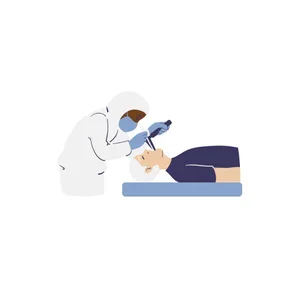Everything you need to know about how to study for (and pass) the biggest exam standing between you and the title "Pharmacist."
You see the order: "IV antibiotics for 6 weeks." Your pharmacist brain floods with thoughts of PICC lines and complex kinetics. Osteomyelitis isn't just an infection; it's a long-term clinical nightmare that can feel overwhelming to manage. If you’ve ever felt that way, you’re in the right place. Let tl;dr give you the tools you need to confidently tackle this stubborn bone infection.
We’ve previously given you our best tips for passing the NAPLEX on your first try. We even have a post specifically about the California pharmacy law exam. But what we haven’t tackled yet is formulating all our collective knowledge into one post about how to pass any MPJE on the first try. Well, tl;dr friends, today is the day.
Have you ever looked at a paid claim and felt that tiny sigh of relief, only to realize months later that you actually lost money on that exact prescription? If that frustrating, upside-down math makes you want to tear your hair out, you're not alone. Let tl;dr break down the black box of PBM reimbursement and give you the tools to understand the fight for your pharmacy’s survival.
Your pager goes off for an RSI, and you hear the word that makes your stomach drop: "paralytic." It's one of the most intimidating requests in medicine, where the stakes are sky-high and every second counts. But what if you could trade that moment of panic for pure confidence? Let tl;dr demystify neuromuscular blockers and give you the tools to manage paralysis like a pro.
You see the order for a "banana bag" and a high-dose benzodiazepine taper, and you know what's coming: alcohol withdrawal. As one of the few truly fatal withdrawal syndromes, the stakes are high. It's time to get comfortable with the chaos. Let tl;dr give you the tools and pearls you need to confidently manage this emergency.
How many times have you seen a penicillin “allergy” that was really just GI upset? (We're rolling our eyes with you). But what happens when it's a true, life-threatening allergic reaction? Anaphylaxis can be terrifying, but the treatment is simpler than you think. Let tl;dr break down the pathophysiology and give you the essential tools to manage this critical emergency with confidence.
It felt like a blockbuster movie sequel that spiraled out of control, right? The GLP-1 compounding boom brought drama, danger, and a lot of questions for the pharmacy. If you've been wondering how to navigate the fallout from this Hollywood-level saga, you've come to the right place. Let tl;dr give you the pharmacist's official guide to the post-shortage era.
“It’s a heartache, nothing but a heartache…hits you when it’s too late, hits you when you’re doooo-wwwn.” Was Bonnie Tyler actually Dr. Bonnie Tyler? Because it sure sounds like she was talking about this week’s topic - endocarditis! Let tl;dr give you some basic tools for managing this critical infection so that you know where to start.
More than likely, you’ve cried at the end of Old Yeller at some point in your life (or maybe at least heard the story of the poor doomed pup). You’ve probably also watched some show that highlighted a creature foaming at the mouth. If you’re like a majority of folks, this may be about the extent of your knowledge on rabies, which is totally understandable. Even though rabies itself isn’t incredibly common, prevention of rabies is, which is where you - the pharmacist - come in. Let tl;dr give you the tools you need to successfully approach a potentially fatal animal bite.
Have you ever run across a prescription or order that leaves you baffled and makes you want to hop on the phone ASAP with the provider? We’re pharmacists, and we love to have the answers… But sometimes, the best thing you can do is PAUSE. You just might be amazed what you’ll learn. Come with tl;dr for one such reflection, and learn a pediatric clinical pearl along the way!
I’m sure back in the day (like waaaay back in the day) there were people who raved about how cool it would be to have medicines that could target infections. Or (gasp) ways to prevent infections in the first place. Happily, science has provided both - and continues to do so! For this generation, we’re constantly talking about how we want to cure cancer. Well, even though we’re not totally there yet, we surely have another sci-fi like dream becoming reality. What if we could engineer an army from within to seek and destroy cancer cells? Guess what, welcome to CAR-T!



















